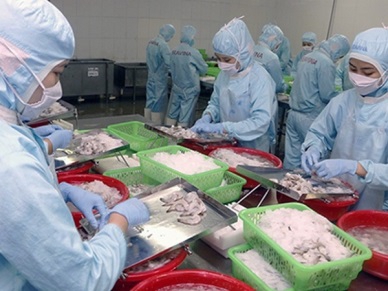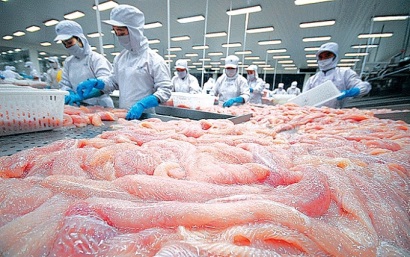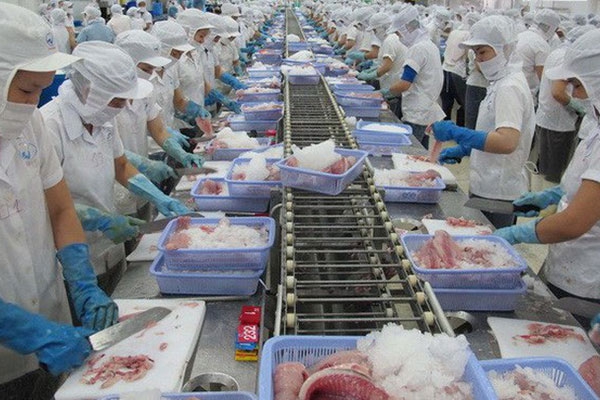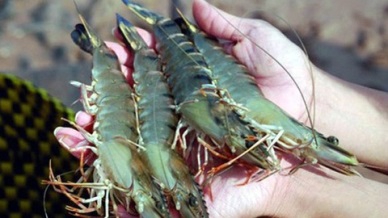SEAFOOD NUTRITION
Those struggling with food insecurity face the burden of not only getting enough to eat, but also accessing nutrient-rich foods that promote good health and help reduce the risk of chronic disease. Seafood contains high-quality protein, vitamins and minerals, and is rich in Omega-3 fatty acids.
Only 1 in 5 Americans eat seafood twice per week, as recommended by the USDA. Heart disease is the number one cause of death for women worldwide. Heart disease and stroke cause 30 percent of all deaths globally, and 800,000 deaths each year in the U.S.
Seafood is lifesaving. According to a Harvard study, eating eight ounces of seafood each week reduces the risk of dying from heart disease by 36%. Eating 8-12 ounces of seafood per week when pregnant can improve baby’s IQ, cognitive development, and eye health. Older adults with the highest fish consumption live and average of 2.2 years longer.

How do the vitamins and minerals in seafood affect your body?
Seafood provides essential nutrients to the body. These include vitamins A, B, and D, as well as omega-3 fatty acids. Fish is also rich in calcium and phosphorus and a great source of minerals, such as iron, zinc, iodine, magnesium, and potassium. Vitamin A helps protect vision and boost immune systems. B-complex vitamins influence energy production, metabolism, and concentration. Seafood is one of the only food sources of Vitamin D, which promotes healthy bone growth, calcium absorption, and boosts immune system efficiency and cell growth.
Two omega-3 fatty acids found in fish are EPA (eicosapentaenoic acid) and DHA (docosahexaenoic acid). Our bodies don't produce omega-3 fatty acids so we must get them through the food we eat. Omega-3 fatty acids are found in every kind of fish, but are especially high in fatty fish such as salmon, trout, sardines, herring, mackerel, tuna, and oysters. A study funded by CDC of 12 modifiable dietary, lifestyle, and metabolic risk factors in the United States found that eating seafood for essential Omega-3 fatty acids can prevent 84,000 deaths each year.
The Omega-3 fatty acids present in seafood have myriad health benefits:
Helps maintain a healthy heart by lowering blood pressure and reducing the risk of sudden death, heart attack, abnormal heart rhythms, and strokes.
Aids healthy brain function and infant development of vision and nerves during pregnancy.
May decrease the risk of depression, ADHD, Alzheimer’s disease, and dementia.
May reduce the chance of developing diabetes and the metabolic syndrome that precedes it. Evidence suggests that higher consumption of omega-3s or fatty fish may also have a positive effect on glucose and insulin metabolism. These fatty acids also tone down the inflammatory processes that contribute to diabetes.
May prevent inflammation and reduce the risk of arthritis.
Seafood makes you smarter. People who eat fish frequently shown to have 14% larger brain hippocampus - the big memory and learning center.
Seafood Nutrition in Pregnancy and Infancy
Pregnancy increases the need for nearly all nutrients, but some nutrients must be available at specific times for the baby’s optimal development. Several of these are most abundant in fish—selenium and iodine, and the omega-3 fatty acid DHA, which occurs almost exclusively in fish. These nutrients, along with other long-chain polyunsaturated fatty acids (EPA and arachidonic acid) are critical for the development of the baby’s organs, especially the brain and eyes.
Eating foods rich in DHA is especially important in the last three months of pregnancy and for the baby’s first two years while the brain is developing. After that, the rate of brain and eye growth slows, but the need for DHA continues throughout childhood.
Babies who obtain DHA from breast milk or DHA supplemented infant formula may score better on developmental and visual tests compared with infants fed formula without DHA. They also have more mature nervous systems. Some studies suggest that children who are well nourished in DHA are better able to learn and less likely to develop learning or behavioral abnormalities compared with children who have consumed little DHA.
Seafood and Mercury
Although all fish have trace amounts of mercury, levels vary widely and most fish have very low amounts usually less than one tenth of the U.S. established guideline for the allowable level of mercury in fish and seafood products. Studies have shown that the highest levels of mercury are found in large fish such as sharks, swordfish, and large tunas such as bluefin. Smaller tunas such as skipjack which is used for canned light tuna have much less mercury. Canned white meat albacore tuna has intermediate levels of mercury. Recent studies have shown that Selenium, an essential mineral found in many ocean fish accumulates in the body and appears to protect against the toxicity from trace amounts of mercury.
Most of the popular species of fish and shellfish consumed in the U.S. have been shown to have low mercury levels. Seafood choices that are very low in mercury include: salmon, sardines, pollock, flounders, cod, tilapia, shrimp, oysters, clams, scallops and crab. There is good evidence that the benefits associated with the omega-3 fatty acids in these species and most types of seafood greatly outweigh the small risk associated with mercury for most people.
The U.S. Food and Drug Administration (FDA) and Environmental Protection Agency (EPA) have developed the following advice to help consumers minimize risks that could be associated with mercury in seafood. The advice is summarized below. To see FDA & EPA’s consumer brochure click here.
For most people, the risk from mercury by eating fish and shellfish is not a health concern.
Women who may become pregnant, pregnant women, nursing mothers, and young children should follow the 3 recommendations below for selecting and eating fish or shellfish to receive the nutritional benefits and be confident that they have reduced their exposure to the harmful effects of mercury.
Do not eat Shark, Swordfish, King Mackerel, or Tilefish from the Gulf of Mexico because they contain high levels of mercury.
Eat up to 12 ounces a week of a variety of fish and shellfish that are lower in mercury.
Five of the most commonly eaten fish that are low in mercury are shrimp, canned light tuna, salmon, pollock, and catfish.
SEAFOOD NUTRITION
contact us
Sign up for advice and support
SOUTH KOREA LARGEST EXPORT MARKET FOR VIETNAMESE SQUID AND OCTOPUS
SOUTH KOREA LARGEST EXPORT MARKET FOR VIETNAMESE SQUID AND OCTOPUS

SHRIMP EXPORTS TO SOUTH KOREA EXPECTED TO RISE 30% IN 2019
SHRIMP EXPORTS TO SOUTH KOREA EXPECTED TO RISE 30% IN 2019

NEW GENERATION FTAS OFFER OPPORTUNITIES FOR VIETNAM’S AGRICULTURAL EXPORTS
NEW GENERATION FTAS OFFER OPPORTUNITIES FOR VIETNAM’S AGRICULTURAL EXPORTS

SEAFOOD EXPORT IN 2019: TAKE ADVANTAGE OF BREAKTHROUGH OPPORTUNITIES
SEAFOOD EXPORT IN 2019: TAKE ADVANTAGE OF BREAKTHROUGH OPPORTUNITIES

VIETNAMESE SEAFOOD EXPORTS TO CHINA INCREASED SHARPLY IN JULY
VIETNAMESE SEAFOOD EXPORTS TO CHINA INCREASED SHARPLY IN JULY

-
Online:1
-
Today:48
-
This week:770
-
Last week:845
-
Last month:1434
-
All:241025








